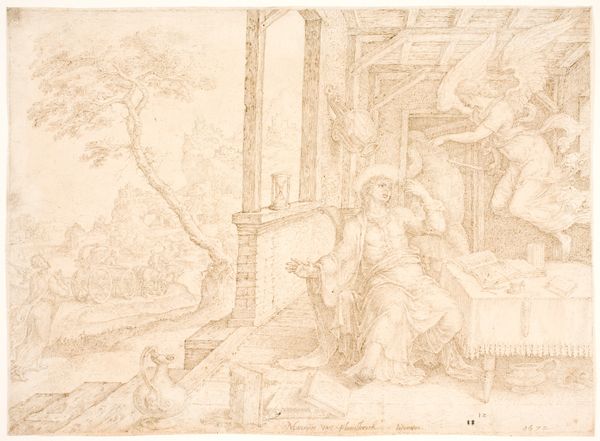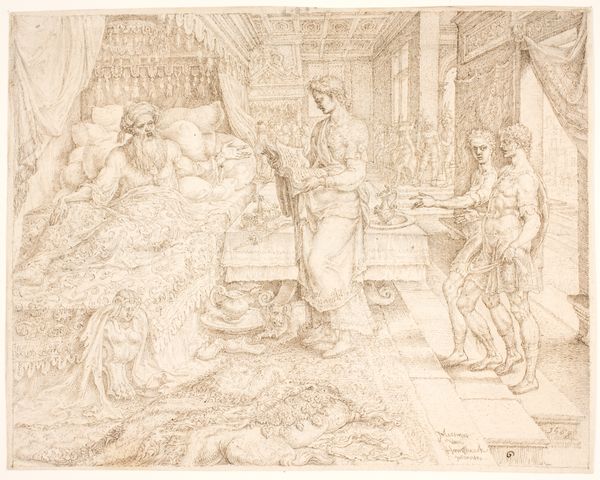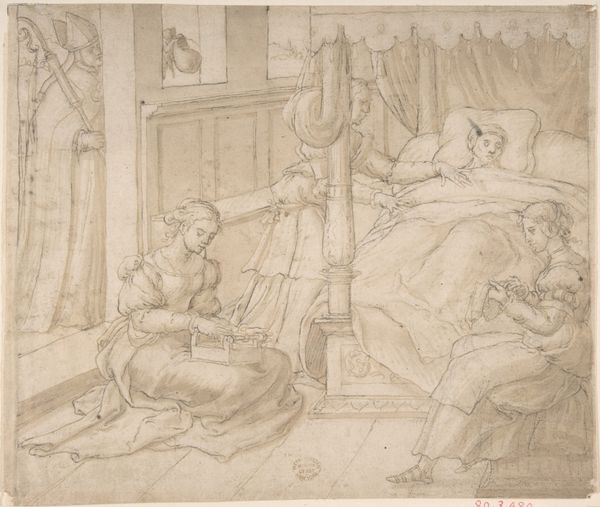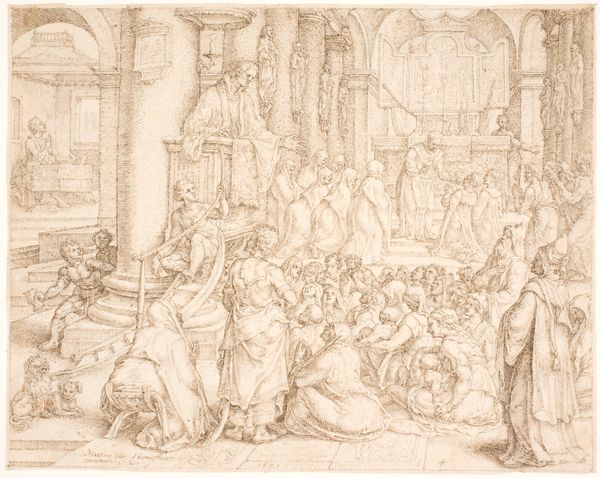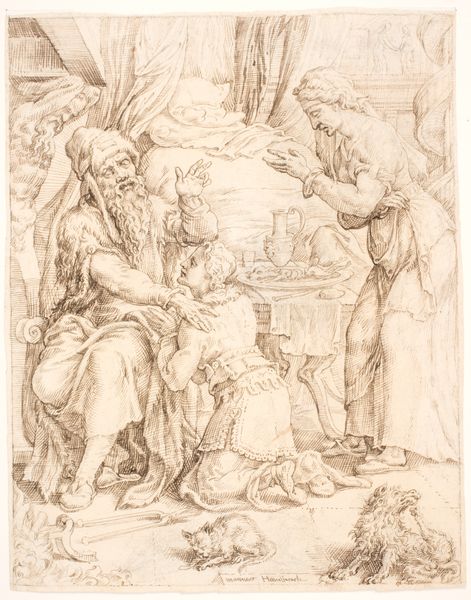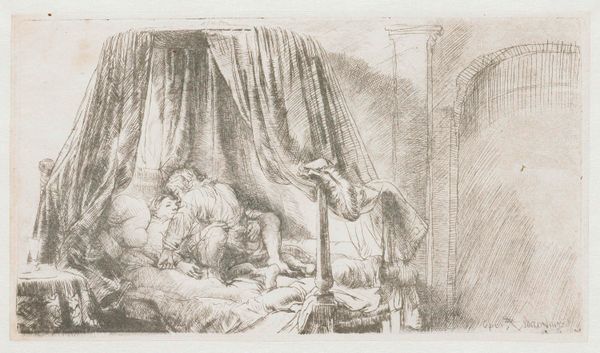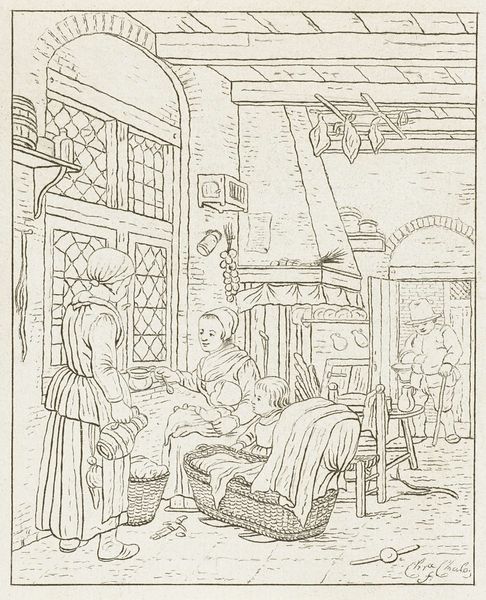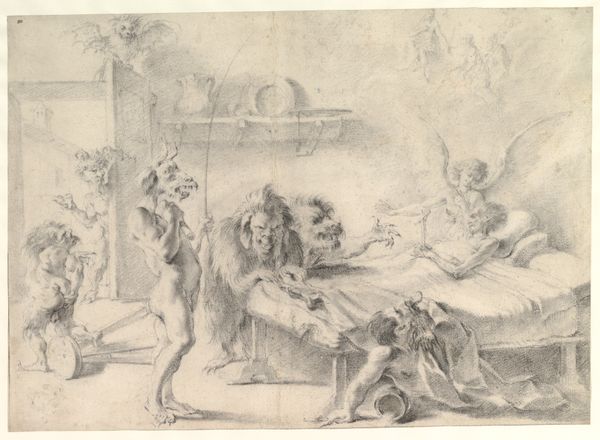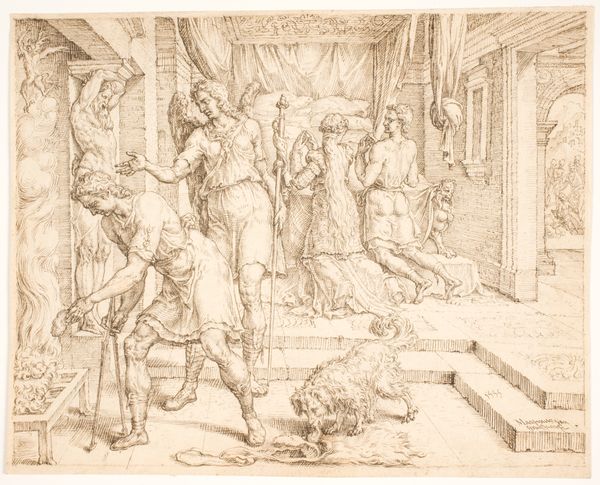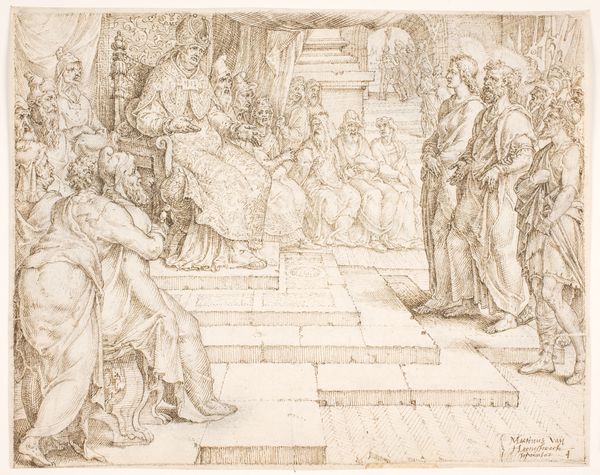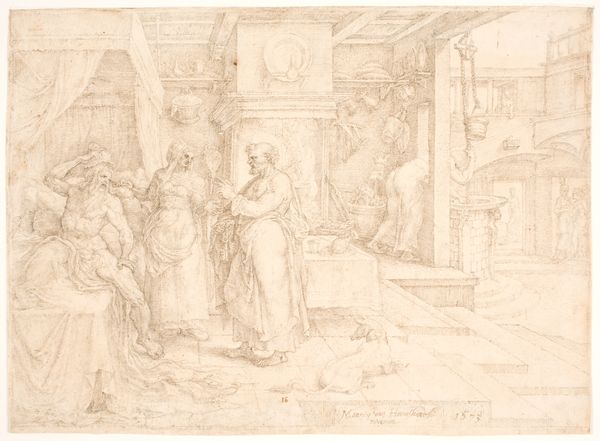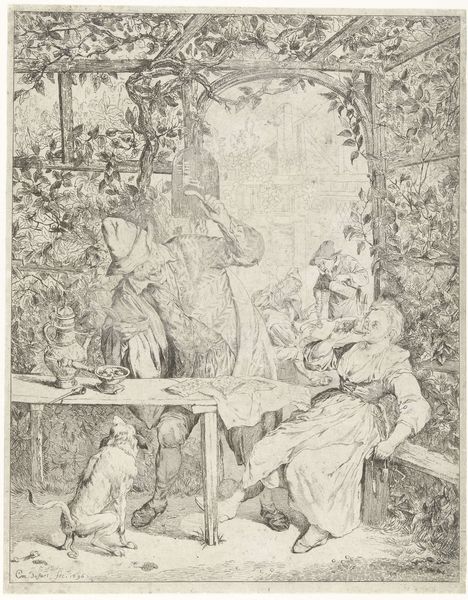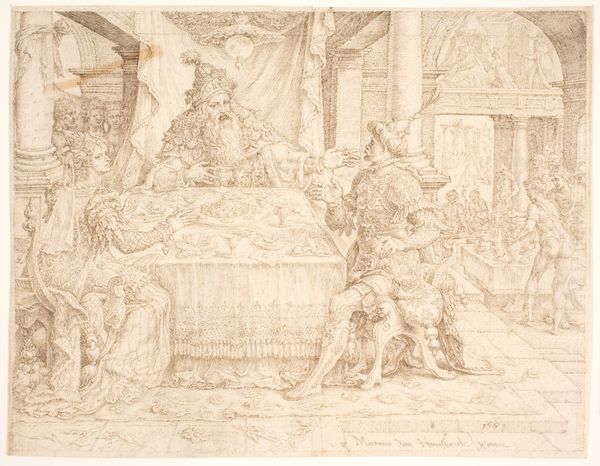
drawing, print, ink, engraving
#
drawing
#
ink drawing
# print
#
figuration
#
ink
#
history-painting
#
northern-renaissance
#
engraving
Dimensions: 201 mm (height) x 253 mm (width) (bladmaal)
Curator: Maarten van Heemskerck rendered this engraving, "Tobit's Blindness," in 1554. The artwork is a print realized with ink. Editor: Immediately, I am struck by the strong diagonals pulling my eye in different directions and the stark contrast that really creates a sense of claustrophobia and disorientation. Curator: Yes, the diagonals definitely play a key structural role here. The perspective lines converge creating depth but also imbalance and it shows a clear departure from earlier Renaissance conventions. What do you make of that door or window with the miniature figures behind Tobit? Editor: A fascinating insertion; almost an inset within an inset, isn't it? That internal panel serves to abstract the external realities of faith from the depicted historical situation. How fascinating for this to appear when we think about rising Protestant movements. The figures appear like figures of justice. Is this part of why this depiction landed with late 16th century audiences? Curator: It may. Remember that history painting served important moralizing and didactic functions in that moment, often tied directly to civic ideals, as you're suggesting. But I also note the intricate rendering of textures, especially on Tobit's robe and the woven matting. Notice how the artist differentiates the effects of light on each, contributing to the work's overall verisimilitude. Editor: And if you look closely at those textural elements it’s pretty amazing how effectively van Heemskerck has suggested narrative causality—note, for instance, that he draws an abandoned fishbone by the repose of the figure to clarify the events surrounding his condition, that his blindness occurred as he slept near the remains of fish. How many layers of careful consideration the artist makes with even the simplest of things, let alone more obviously metaphorical images! Curator: I agree; the subtle layering of symbols is definitely there and indicative of broader movements of iconology at the time. Well, it’s certainly a complex piece blending formal experimentation with symbolic depth. Editor: Absolutely. I came in expecting a stern historical depiction. I leave realizing I've seen a formal statement of human consequence!
Comments
No comments
Be the first to comment and join the conversation on the ultimate creative platform.
